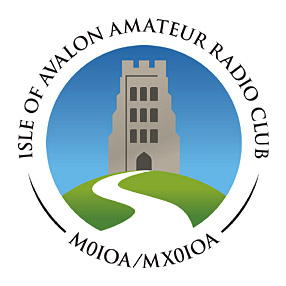Ailunce HS1 (mcHF clone) trials and tribulations
The Ailunce HS1 is quite a useful QRP HF rig, but it’s quirky as hell, and not really supplied in a usable form. The documentation sucks bricks, and needs a lot of trial and error. On the upside, you get a small SDR transceiver with inbuilt USB sound card, handy for digimodes and FT8. A poor man’s Elecraft KX3, the form factor is similar-ish, though usability is not in the same league.
As an SDR rig, functionality is always going to be a moving target, which makes writing documentation hard. Ailunce claim the following specs
- Frequency Range:0.5MHz-30MHz
- Operating Mode:SSB(J3E), CW, AM, FM, FREE-DV
- TX Power:Maximum 15W
The rig is owned by another member of the club, I confined testing to the operational controls, rather than flashing firmware etc, because you would need to go through the line-up process again. There is great similarity with the mcHF project.
The mcHF is in some ways a hacker’s rig - sure, it may be cheap to purchase, it is the test equipment you need to set it up from scratch and the knowhow to use it that is the hard and expensive part ;) FWIW the original open source mcHF has a restriction on commercial use, and is pushed as a project not a product.
I have no idea how or if Ailunce/Retevis solved this conundrum. I would take the 15W claim with a pinch of salt, although on the lower bands (80m etc) FULL could give about 10W, but 5W was about it on 10m.
Documentation
The user manual is here. Observe the similarity to the mcHF user manual which is a pointer in the right direction. In particular, the mcHF manual tells you where the M1, M2 and M3 buttons are (below the rotary encoders on the LHS) which is a detail the Ailunce manual never shared with me, other than repeatedly telling me to use one or the other of these ;)
Quirks
The rig is quite crazy-making in some capricious oddities. Let’s start with the microphone.
From the get-go this is odd. A TRRS jack - well, perhaps they have ground, PTT, mic audio and a feed of RX audio for the jack in the mic. This is not wired like the mic jack of the mcHF, which is a TRS jack
| Function | pin |
|---|---|
| Tip | mic |
| Ring | PTT |
| Sleeve | GND |
but it’s worse that that. The HS 1 does have a TRS jack, to the best of my knowledge. So I adopted the mcHF connections, to try a different microphone, only to be rewarded with chattering of TX/RX on keying up. Further investigation required inspiration from Sherlock Holmes1, since I had firstly assumed the mcHF wiring, and secondly that nobody in their right mind would go against the universal convention that the sleeve is ground. Universal because this allows you to mount the jack socket on a metal case.
| Function | pin |
|---|---|
| Tip | mic |
| Ring | GND |
| Sleeve | PTT |
Well, I’ll be damned. whatever remains,however improbable, must be the truth. Ailunce do not use the sleeve for ground on the microphone connector. If this were my rig, I would open it up and if this could be changed for a more civilised connection I would make this the same as mcHF. Perhaps it’s a one-off sample fault, if the socket is a hand-wired connection. If it’s a PCB, then it’s just bonkers. Since this isn’t my rig I got to rewire the plug I was testing a different microphone with.
Why did I want to try a different microphone? Because the supplied one suffers from RF feedback on 10m. Even at 5W. I had tested the rig into a dummy load, and it sounded OK even at FULL, whatever power that may be. I was testing at 28.405MHz USB, because on our net at this frequency this rig sounded foul - only just about intelligible. This was determined on G6UVO’s original Sirio CB antenna, and on my OCFD, and on the Antron A99 vertical I use for the net.
I swapped it for a CAIRO-adapted Baofeng similar looking mike I had for VHF rigs. The RF feedback wasn’t quite as bad, which didn’t mean to say it was good. I next swapped it for the homebrew SOTA mike - when I make microphones using electret capsules, I shunt a 1nF 1206 SMD capacitor right across the capsule terminals, to try and fight RF feedback. This sounded fine, which therefore eliminated the rig as being susceptible to RF feedback. Taking the mike apart (which helped me buzz out the benighted ring to ground connection oddity) I saw that there are capacitors on the PCB, but the mike is stood off the PCB a few mm, and there are a few mm of track. Given that the wavelength of 10m is, well, 10m, I would have thought this should have been fine. But it wasn’t. I’ve only used this sort of mike on VHF before.
So much for hardware quirks. Now onto software quirks.
Software quirks - CAT - USB audio - totally undocumented by Ailunce
For the record, this is the firmware
If your HS1 says anything else than perhaps the quirks are either fixed, or at least different. I tested with a Raspberry Pi 4 running Raspbian Buster, running FLdigi and FLrig, and WSJT-X. Both of these work OK with my FT897 and a G4ZLP interface, but the HS1 needs neither - you can use the mini USB connector on the side. If you want to use the USB audio input, then look at the picture above. That says MIC in the little group of boxes on the top left. You ain’t going nowhere with that. You want it to look like below. Diddle with button M3 (confusingly marked RIT) until you get EXT to appear, and correspondingly diddle with M1 to make CMP say OFF. RIT and NB also want to be 0.
You are set up for usb sound.
Ailunce keep extremely schtumm about the existence of this facility. Neither CAT nor USB sound card functionality are mentioned in the manual, however, in looking how to set up the mcHF with FT8 I ran across this groups.io post which then directed me to this page on the UHSDR wiki. Being the chancer that I am, I figured it was worth a go. It was.
Before you go further, make sure no USB cable is connected before you try and start up the Ailunce HS1. I found the start sequence would hang if the Raspberry Pi was connected to the radio when the radio was powered off. I am not the only one to experience this, it can happen with Windows machines too, though not all. Go figure. You have been warned.
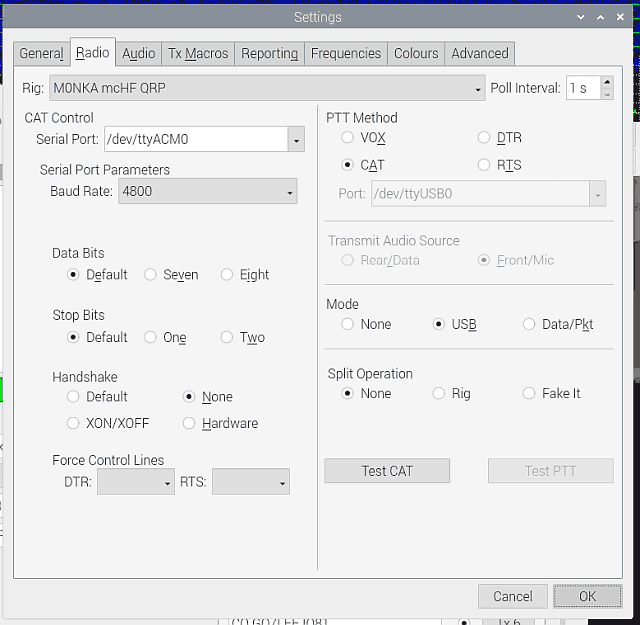
setting up the Ailunce HS1 as a mcHF to run WSJT-X and FT8
I first tried it with WSJT-X. The first piece of frustration I had was finding the USB serial port. ttyACM0 ? No idea, but that’s what it is. Some people tell you the mcHF emulates the FT817, that didn’t work for me. But I had something else wrong - left over from the FT897 I had selected Data/Pkt, which means the back socket. The Ailunce is not going to soft-switch inputs for you. So if you do that. WSJT first sets the frequency right, and you think you are off to the races, this is reflected on the radio display and WSJT-X. On the next 1 second poll, it then tells hamlib (which it uses under the hood) to set Data/Packet mode, and hamlib goes “uh-oh, I can’t do that Dave” and WSJT then sets the frequency is low as low can be and flags it out of band. Tantalizingly, you see that it managed to set the frequency, but a second later it bombs out. Set the mode to USB (that’s upper-side band in this context) or NONE to avoid that kick-back. You are going to get to set that in the Ailunce mode anyway. For a software defined radio you get to do more than your fair share of the work by hand.
Now you get to go look for your sound card. Sound is capricious on linux. I try and use the ALSA device, which is usually least laggy and grief-stricken. It is, however, nice of the mcHF design USB interface to identify itself as such, on Linux at least.
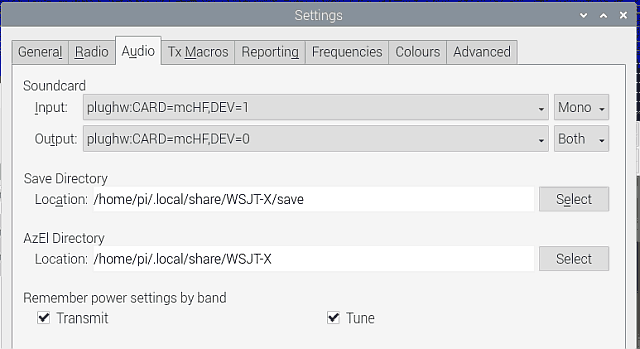
You may get different ways of reaching the sound card, through the Pulse audio subsystem etc. I believe plughhw:CARD=mcHF is ALSA, this worked for me.
Connect to a dummy load, perhaps via a (bypassed) ATU with power meter, and hit TUNE. You should see the TX LED go red and power output on the mcHF display and the power meter. If you see the needle twitch and settle to zero, something is wrong with your sound card setting, you are on your own there. If the TX LED lights and the frequency follows WSJT-X then CAT is OK, but if you haven’t got the audio set right you aren’t going to put any signal out regardless of the red blinkenlights looking right.
I made a couple of QSOs with this on 10m
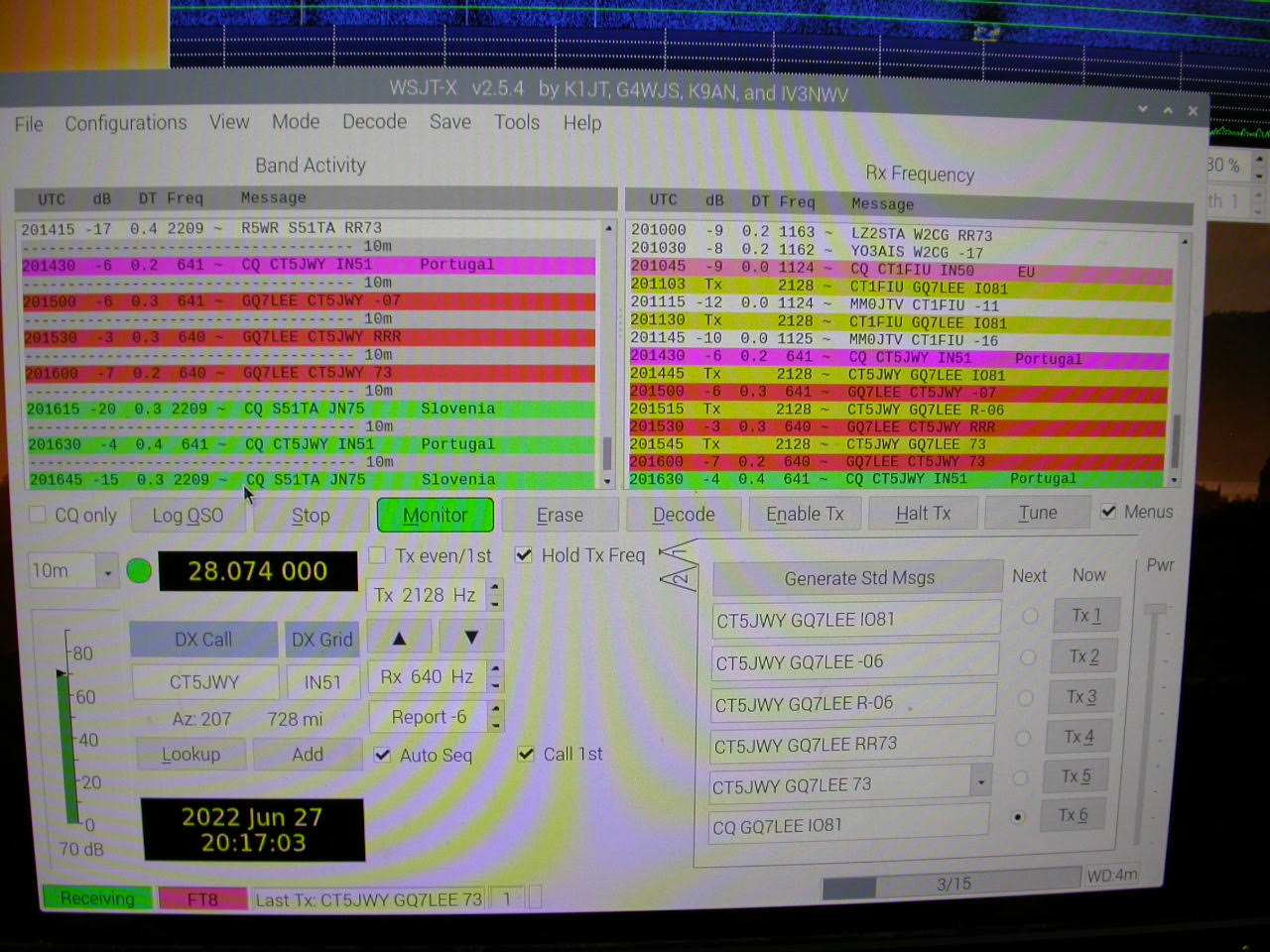
using a CB vertical. Switching to a OCFD I listened on a few bands, and the signal got out OK.
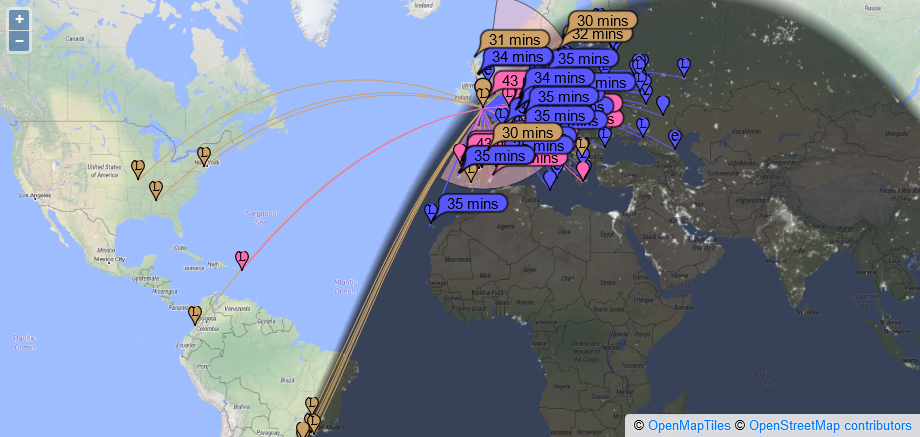
setting up the Ailunce HS1 as a FT817 using FLRig for FLDigi
I use FLrig with FLDigi. It’s not the only way to use CAT control with FLDigi, but it’s what I do, using the Raspberry Pi. FLrig really wants to still see your old serial CAT control before it will let you ger far enough to change it, I had to put the USB serial dongle in that controls the FT897 before it would allow me to change it, else it hangs. Forever. Really must remember to switch that back before I give the Ailunce back ;) Start up FLrig
FLrig doesn’t have a mcHF option, or at least it wasn’t amoung the options I had. However, the UHSDR project tells you the rig emulates the FT817 to a large extent, so choosing that should get you going.
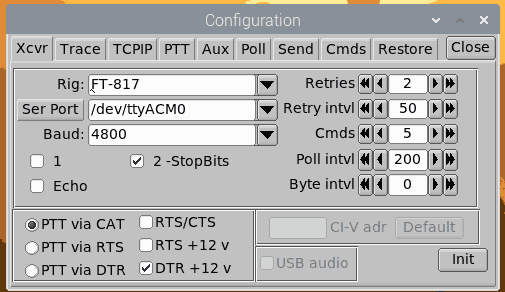
FLrig is a bit more robust that WSJT-X’s Hamlib - when I ask for DIGI mode on FLDigi, FLrig resets that to USB (upper sideband, not universal serial bus) as it was before without throwing a hissy fit and losing touch with the desired frequency.
Only after you have sorted FLrig should you start FLDigi, FLDigi was still set to use FLrig for CAT control. So you don’t need to change CAT control in FLDigi, just audio.
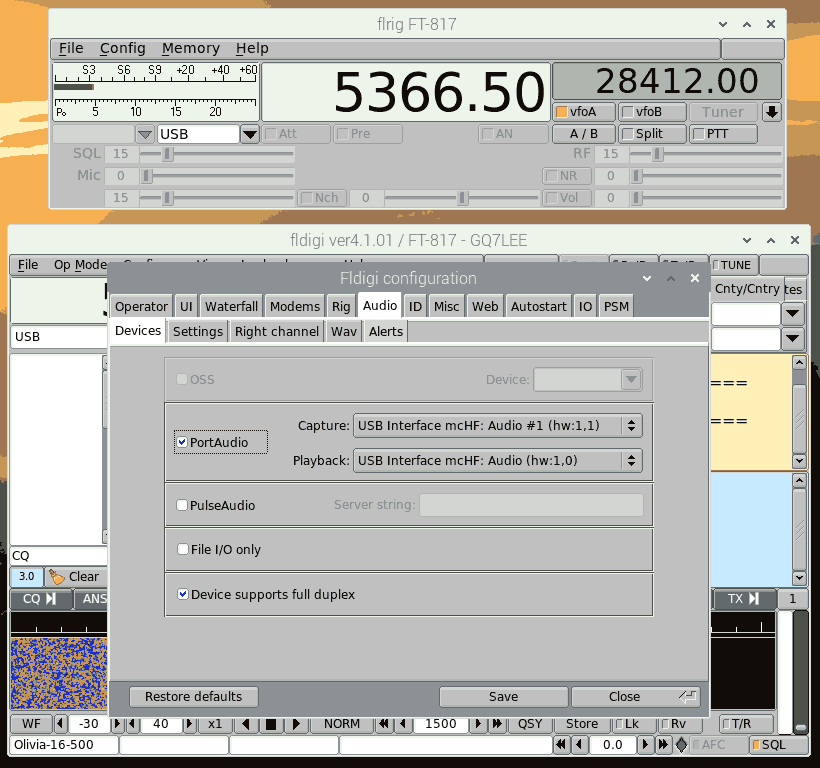
Portaudio worked for me. As I said before, audio on Linux is arcane and flighty. This is not the only way to do this, but portaudio is what worked for me, both with this rig and with the G4ZLP external interface for the FT897. The delightful thing with audio subsystems on Linux is that there are so many different and mutually incompatible standards2 - take your pick…
I had to monitor myself on the Weston SDR, since I didn’t manage to drum up any Olivia 16/500 contacts on 60m. It’s a shame, but hardly anybody seems to monitor any digimodes other than FT8 these days. But the signal did get out on the OCFD in the early afternoon.
The FT817 CAT interface never tells FLRig it is putting out more than 5W, but at lower frequencies the Ailunce seems to be capable of putting out about 10W on FULL.
Conclusion
The price is right but the goods are odd. The mcHF this is based on is billed as a project not a product, so you should expect some quirkiness which project builders would be au fait with but I wasn’t.
Having said all that, from a standing start I managed to get this going in a couple of days. That is, after I discarded the supplied microphone, worked out the barmy wiring of the microphone connector and took a long shot on the CAT control and usb sound card interface, about which Ailunce don’t breathe a word3. Teamed up with a Raspberry Pi4 and touchscreen it would make a decent basis of a QRP datamodes rig, and the inbuilt usb connected CAT control and sound card makes that a bit less messy and error-prone 4 than using an analogue interface to a rig like the FT817/818 or KX3.
resources
-
when you have eliminated the impossible, whatever remains,however improbable, must be the truth The Sign of Four ↩
-
Refer to Raspberry Pi’s 2020 blog - to wit: Audio on Linux is really quite complicated. There are multiple different standards for handling audio input and output, and it does sometimes seem that what has happened, historically, is that whenever anyone wanted to use audio in Linux, they looked at the existing libraries and programs and went “Hmmm… I don’t like that, I’ll write something new and better.” This has resulted in a confused mass of competing and conflicting software, none of which quite works the way anyone wants it to! ↩
-
There’s a throwaway line on page 72 Also included is J11, the USB Dfu connector used for programming and J10, the full-sized USB connector which is reserved for future use with other peripherals ↩
-
As long as you remember not to start the HS1 with a computer connected to the DFU mini-USB socket - because it won’t start up. ↩
